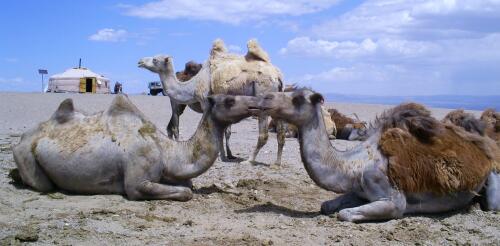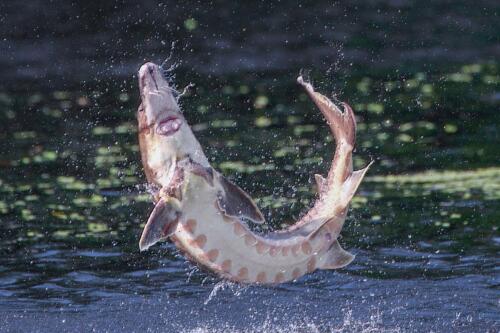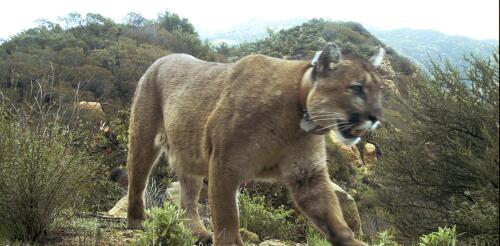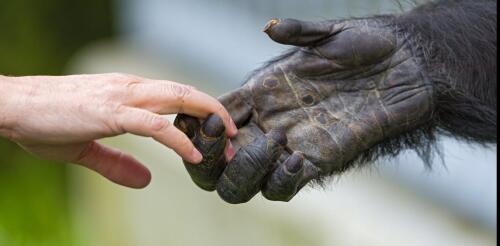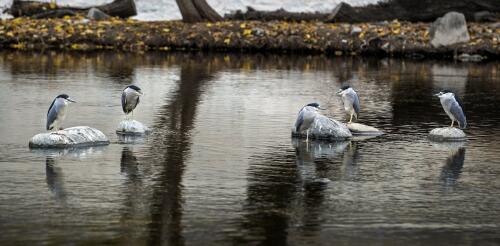Wildlife
Fatal attractions are a standard movie plotline, but they also occur in nature, with much more serious consequences. As a conservation biologist, I’ve seen them play out in some of Earth’s most remote locations, from the Gobi Desert to the Himalayan Highlands. In these locales, pastoralist communities graze camels, yaks and other livestock across wide ranges of land. The problem is that often these animals’ wild relatives live nearby, and huge, testosterone-driven wild males may try to mate with domestic or tamed relatives. Both animals and people lose in these encounters. Herders who try to protect their domestic stock risk injuries, emotional trauma, economic loss and sometimes death. Wild intruders can be displaced, harassed or killed. These clashes threaten iconic and endangered species, including Tibetan wild yaks, wild two-humped camels and Asia’s forest elephants. If the wild species are protected, herders may be forbidden from chasing or harmin...
A fish species that hasn’t been seen since the late 19th century was reintroduced to its habitat. According to Nature World News, the Atlantic sturgeon disappeared from its home in the Göta älv River in Sweden due to pollution and overfishing. The fish is now swimming in the river because of conservation efforts from the Swedish Anglers Association, the Museum of Natural History in Gothenburg, and several universities. This conservation effort will gradually introduce the species once a year over the next 10 years to ensure there will be a population that can support itself. One hundred juveniles transferred from a German farm have been released into Göta älv to start the project. Project manager Linnea Jagrud said, ‘This is a fantastic start.” The sturgeon is expected to benefit the river’s ecology because it eats material at the bottom. In addition, the fish oxygenate the riverbed’s sediment, whi...
Rats thrive around humans, for good reason: They feed off crops and garbage and readily adapt to many settings, from farms to the world’s largest cities. To control them, people often resort to poisons. But chemicals that kill rats can also harm other animals. The most commonly used poisons are called anticoagulant rodenticides. They work by interfering with blood clotting in animals that consume them. These enticingly flavored bait blocks are placed outside of buildings, in small black boxes that only rats and mice can enter. But the poison remains in the rodents’ bodies, threatening larger animals that prey on them. My colleagues and I recently reviewed studies from around the world that sought to document wild mammal carnivores’ exposure to anticoagulant rodenticides. Many animals tested in these studies were already dead; others were alive and a part of other studies. Researchers detected rodenticides in about one-third of the animals in these analyses, i...
When the World Health Organization declared COVID-19 a pandemic on March 11, 2020, humans had been the only species with reported cases of the disease. While early genetic analyses pointed to horseshoe bats as the evolutionary hosts of SARS-CoV-2, the virus that causes COVID-19, no reports had yet surfaced indicating it could be transmitted from humans to other animal species. Less than two weeks later, a report from Belgium marked the first infection in a domestic cat – presumably by its owner. Summer 2020 saw news of COVID-19 outbreaks and subsequent cullings in mink farms across Europe and fears of similar calls for culling in North America. Humans and other animals on and around mink farms tested positive, raising questions about the potential for a secondary wildlife reservoir of COVID-19. That is, the virus could infect and establish a transmission cycle in a different species than the one in which it originated. Researchers have documented this phenomenon of human-...
The Earth is losing animals, plants and other living things so fast that some scientists believe the planet is entering its sixth mass extinction. But there’s some surprising good news: Urban areas may be key to slowing down or even reversing this crisis. This idea may seem counterintuitive, since studies show that urbanization is a big driver of biodiversity loss. Cities alter the environment with artificial lighting and noise pollution, which affect many species. And urban land cover is expected to increase by 2.5% globally between 2000 and 2030 as more people move to cities. As one measure of urbanization, half of the continent of Europe is less than 1 mile (1.5 kilometers) from a roadway or railway line. No location on the continent is more than 6 miles (10 kilometers) from these features. But there are ways for cities to use nature-based solutions to slow species loss within their borders. At a major international conference on biodiversity loss in 2022, global lead...
